mReview: Toyota Prius Hybrid 1.8 – Edge Of Tomorrow
The poster car for Toyota’s hybrid expertise has returned as a fifth-generation model, which is futuristic, yet surprisingly simplistic in some ways
The latest Prius is boldly styled as a fastback from the future, circa 2044 when Singapore’s fifth prime minister has taken over from Lawrence Wong and the PM’s official car is a white Lexus BEV powered by a light solid-state battery with a range of 1,000 kilometres.
The Prius looks particularly edgy and wedgy in Platinum White Pearl, because this colour looks most cohesive with the black body elements - airdam, fenders, side-mirror covers, tailgate edge, rear bumper cladding and obvious “PRIUS” emblem.
Those so-called “hammerhead shark” headlights gel beautifully with the wonderful wedge shape and its striking, single-sweep bonnet/A-pillar line.
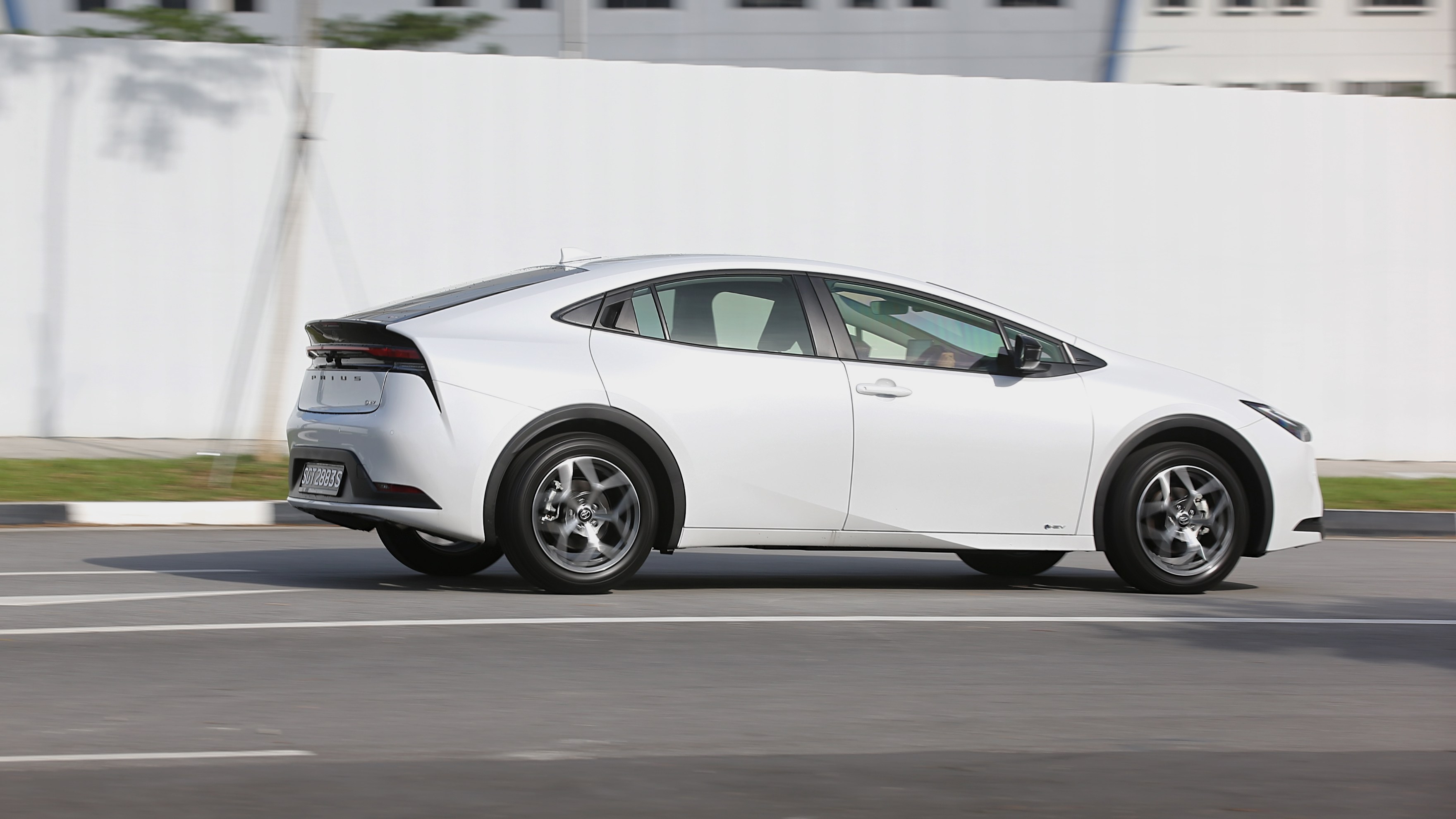 Achieving great mileage in the new Prius is as easy as drinking Japanese green tea from a white ceramic cup.
Achieving great mileage in the new Prius is as easy as drinking Japanese green tea from a white ceramic cup.
Despite the futuristic exterior which zaps me 20 years down the road when my health status as a driver will be as depleted as my CPF retirement account, the Prius interior is merely up-to-the-minute in the year 2024.
The dashboard has an interestingly-stacked layout and an unusual 7-inch instrument cluster, but is otherwise restrained in its design. Nothing dramatic to distract the people on board and nothing fantastic to delight them, but the Prius cockpit is undoubtedly cooler than the current Corolla Altis’.
Anyway, it might not be a bad thing to do without dazzling ambient-light effects and a daunting array of display configs and colours, because mass-market Toyotas are for practical people who have more important things to do than rejig the onboard lightshow every other day.
The previous Prius’ interior drama has been dialled down in the successor - no more “video arcade” centralised cockpit, “phallic joystick” drive selector and “Japanese rice cooker” white finishes.
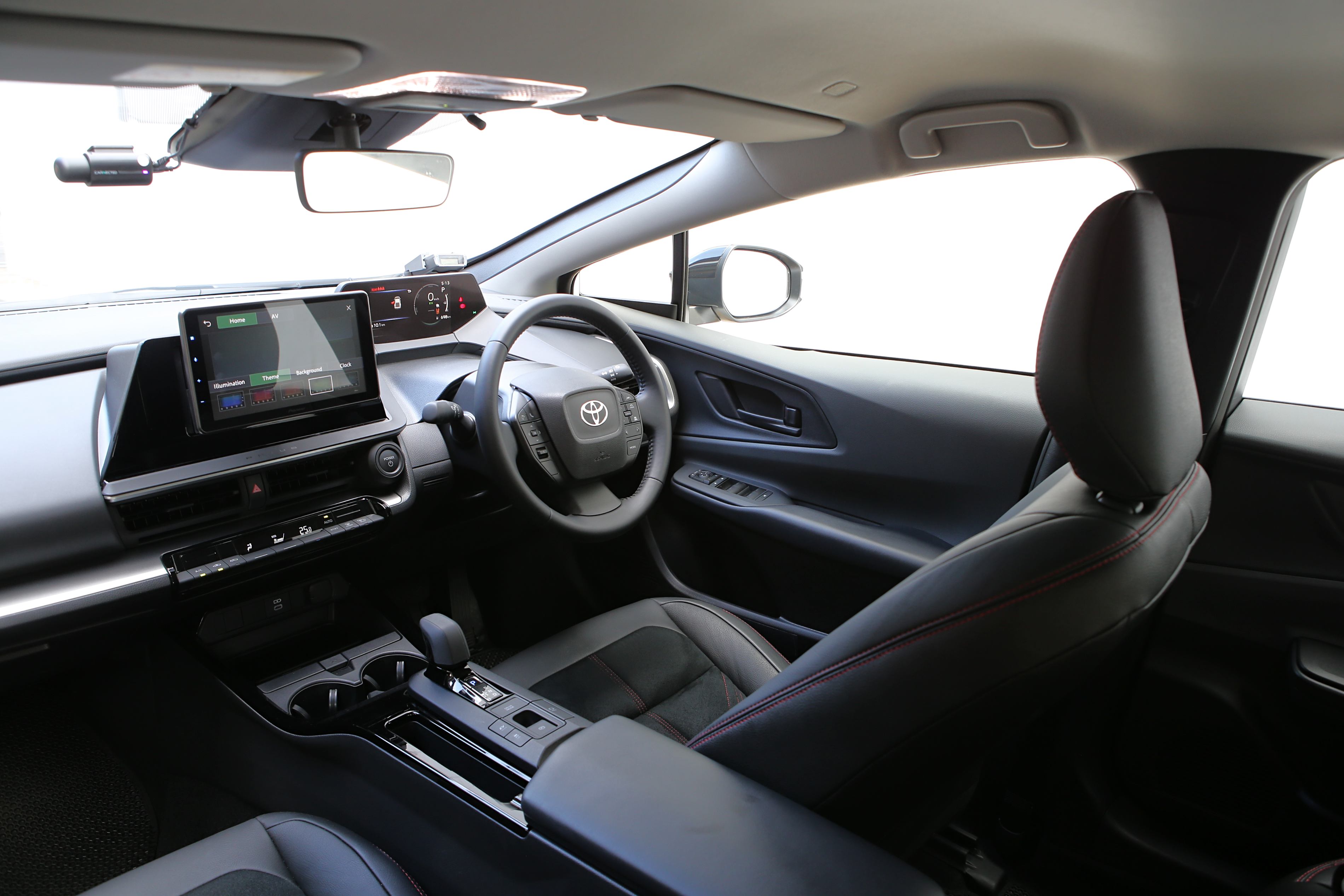 Prius cockpit is less dramatic than the exterior – watch your head when entering or exiting, those A-pillars have a sharp rake.
Prius cockpit is less dramatic than the exterior – watch your head when entering or exiting, those A-pillars have a sharp rake.
Too bad the Singapore-spec Prius gets an obviously retrofitted 9-inch infotainment touchscreen, instead of the Japan-spec full-size integrated display which probably would have looked and worked better.
The information and entertainment provided by the local system are good enough for an undemanding driver like myself, and includes wireless Apple CarPlay and wireless Android Auto, which are almost essentials in this era of smartphones used by less-smart drivers.
But the basic graphics and occasionally clumsy interface make me wish for a Toyota/Panasonic tablet of some sort at the centre of the dashboard, smoothly controlling everything from J-pop hits to Nikkei news bites, complete with impressive infographics hijacked from a PlayStation 5 driving simulator.
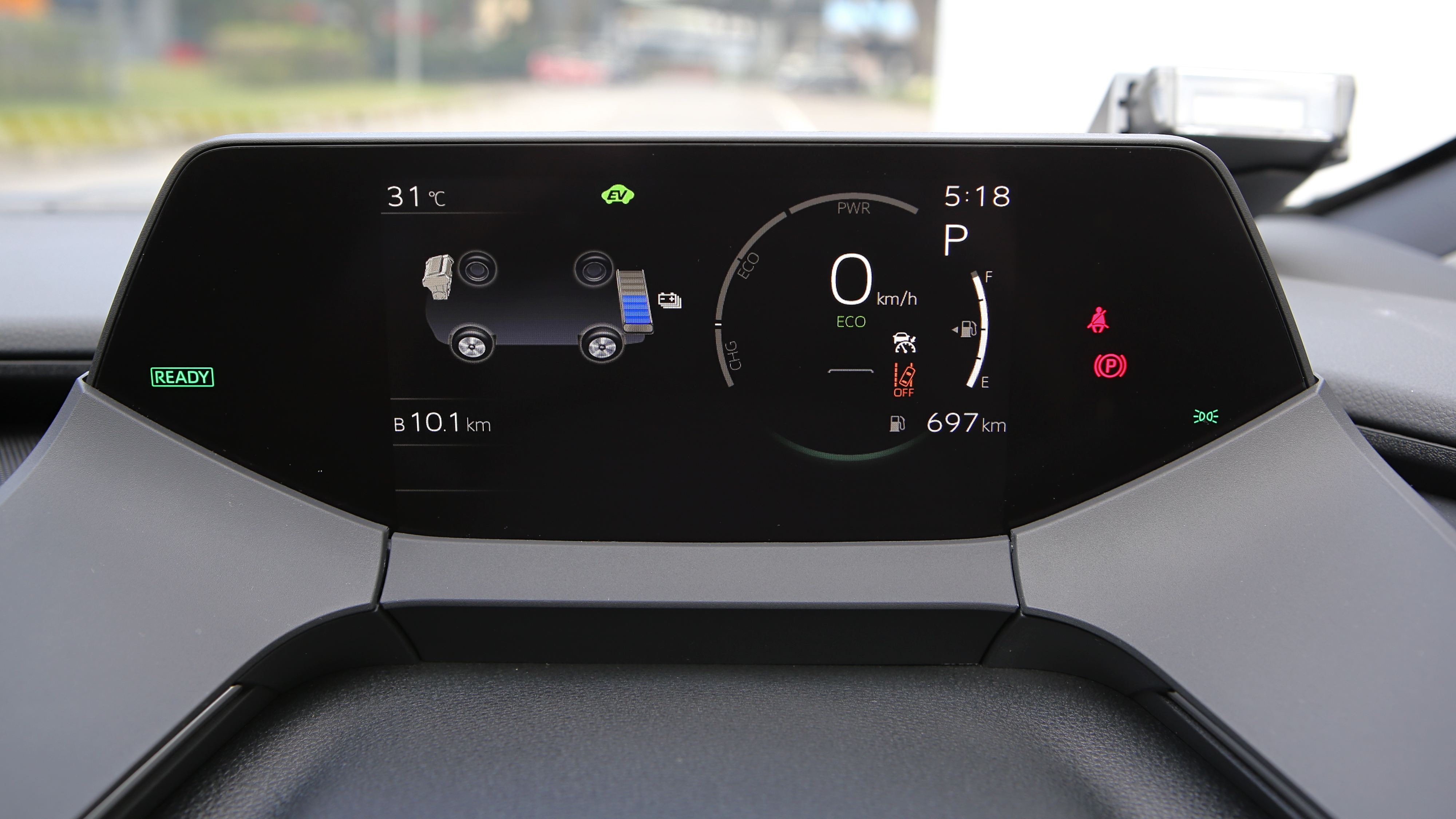 A bit of automotive science fiction here, plus space-age sound effects to accompany startup/shutdown and external lock/unlock.
A bit of automotive science fiction here, plus space-age sound effects to accompany startup/shutdown and external lock/unlock.
In any case, providing idiot-proof controls is child’s play for Toyota engineers. In the new Prius, for instance, I could literally spot every self-explanatory switch from the driver’s seat. Even the bonnet latch release lever is clearly visible from where I’m seated.
The transmission lever is stubby and handy, while the various buttons behind the “PRNDB” panel for Drive Mode, EV Mode, traction control, electronic parking brake and auto hold are neatly arranged. Idiot-proof yet again!
Also idiot-proof are the switches for operating the mirrors, windows, locks and whatnot. Drivers with mild OCD may focus on the 22-level adjustment for the instrument cluster dimmer and 11-stage manual leveller for the headlights. Those frontal LEDs give great illumination, by the way.
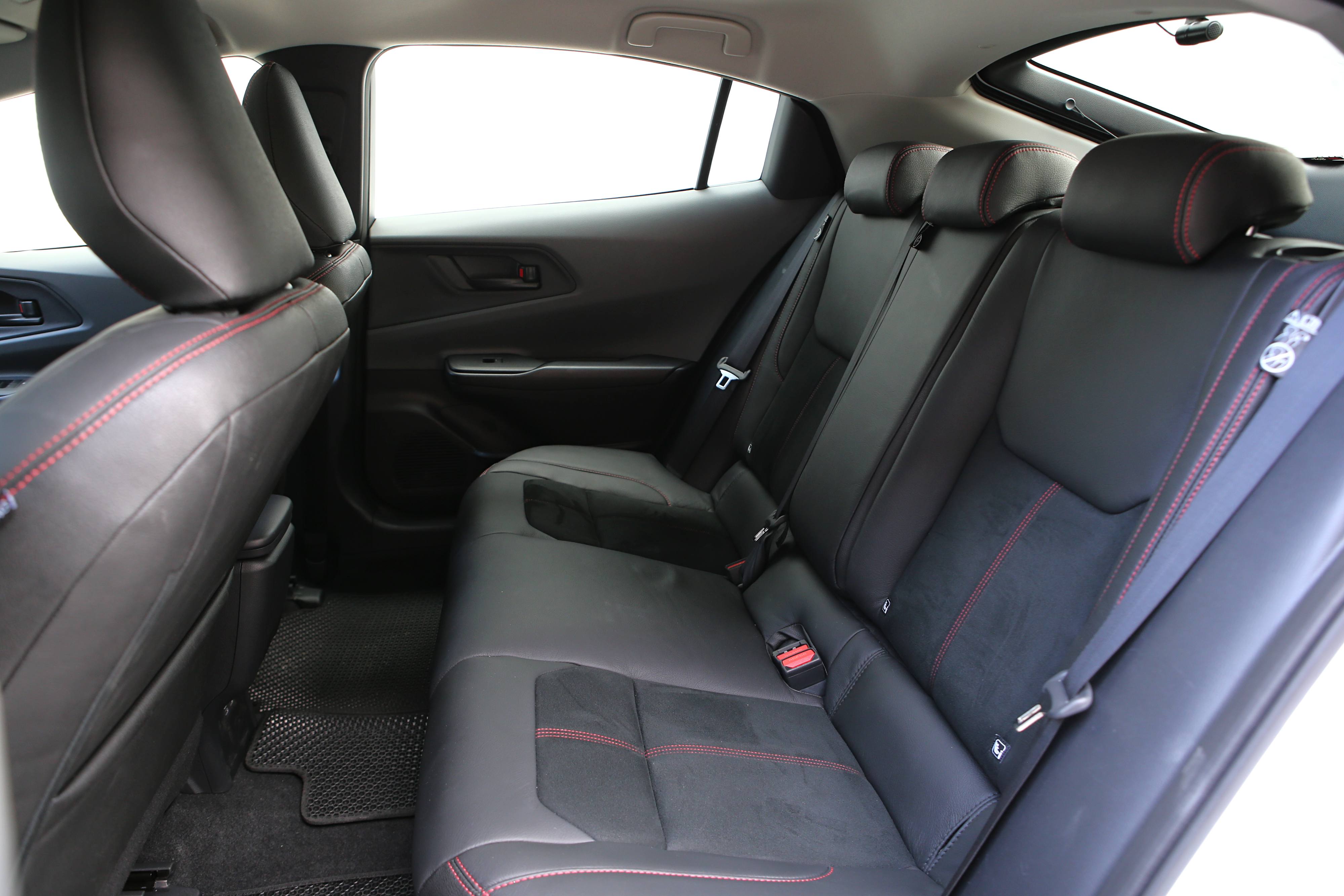 Roomy enough for up to three people, but with limited stowage points.
Roomy enough for up to three people, but with limited stowage points.
Visibility from behind the wheel is good towards the front and sides of the Prius, even though its radical shape with that “teardrop” glasshouse might suggest otherwise.
The front quarter-pillar glass panes and adequate side-mirror coverage, plus a blind spot monitor, help with the driver’s outward views, as does the clear reverse-camera feed. Admittedly, an all-around camera system would have been more helpful, especially when manoeuvring in cramped carparks or crowded streets.
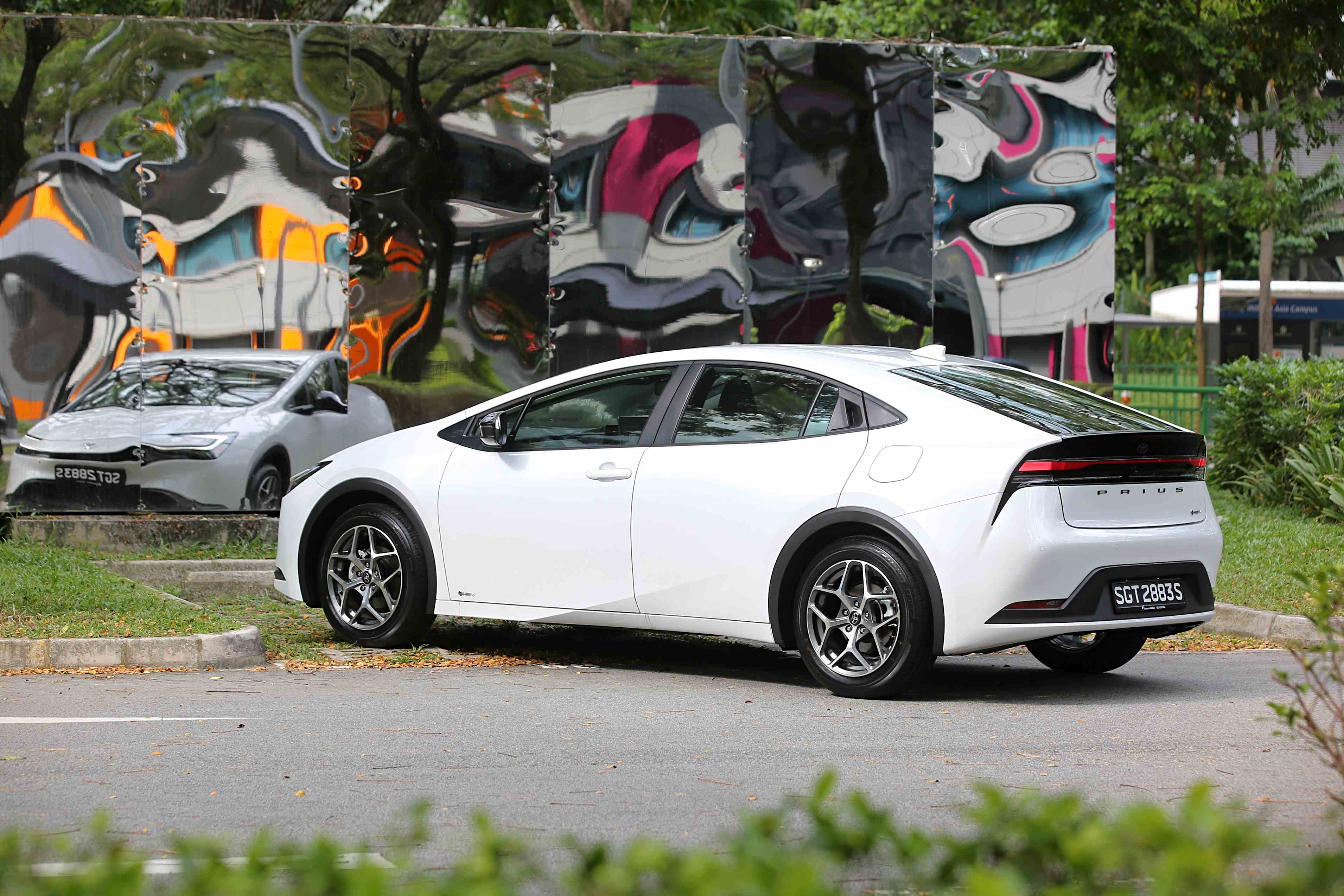
Whatever the space and traffic in urban areas, the new Prius is relaxing to drive.
The well-assisted steering makes directional changes a breeze - from slow lane changes to quick U-turns. Also helping the car’s manoeuvrability in town is the turning circle of 10.44 metres, which is tighter than before and also the same as that of the nippy C-HR.
On expressways and major trunk roads, Toyota’s Dynamic Radar Cruise Control with Lane Tracing Assist makes cruising safer and even easier, in a user-friendly manner.
 Prius fastback trunk with 60:40 split-fold is ready to haul stuff, which might include a cabbie's pail and rag.
Prius fastback trunk with 60:40 split-fold is ready to haul stuff, which might include a cabbie's pail and rag.
The 1.8-litre petrol-electric machinations are familiar and proven, holding their own in the pure-electric era. The new Prius still has an EV mode, but it remains a token driving option with precious few opportunities to run as a silent and zero-emission electric vehicle, even if you drive like an L-plater.
The Prius works best as an honest hybrid. Once you get past the noticeable engine kick-in with its slight vibration and the four-pot engine noise thereafter, the drive will always be between acceptable and agreeable.
The engine and CVT work as one to get going without shift shock. The progress is seamless and highly efficient.
 There's a Power drive mode to make the performance more urgent and less efficient, which is unnatural and counterproductive in the Prius context.
There's a Power drive mode to make the performance more urgent and less efficient, which is unnatural and counterproductive in the Prius context.
If I drive normally with a typical mix of city and highway motoring (gentle on the throttle input, staying within speed limits and not carrying more than one passenger), I could do at least 20 kilometres per litre in the Prius. It’s as easy as drinking Japanese green tea from a cup - no sugar, of course.
If I drive abnormally, so to speak (super gentle on the throttle, staying well below speed limits and driving alone all the way), I could do about 25 kilometres per litre in the Prius. But it’s less easy than drinking Japanese green tea from a cup, because I would need to pick a pack, poke a straw in and then sip slowly. Some effort is required.
The fuel efficiency out of the box (Toyota claims 24.39 km per litre on the combined cycle) is excellent, with a realistic mileage of between 800 and 1,000 kilometres from a full tank of fuel (43 litres). This makes the new Prius a sensible choice for private-hire operators and taxi companies.
I don’t have to be a PHV part-timer or a cabbie to appreciate getting 20 to 25 kilometres from every litre of precious petrol in the Prius. But as a private driver not for hire, I might want some fun to go with that fuel-saving.
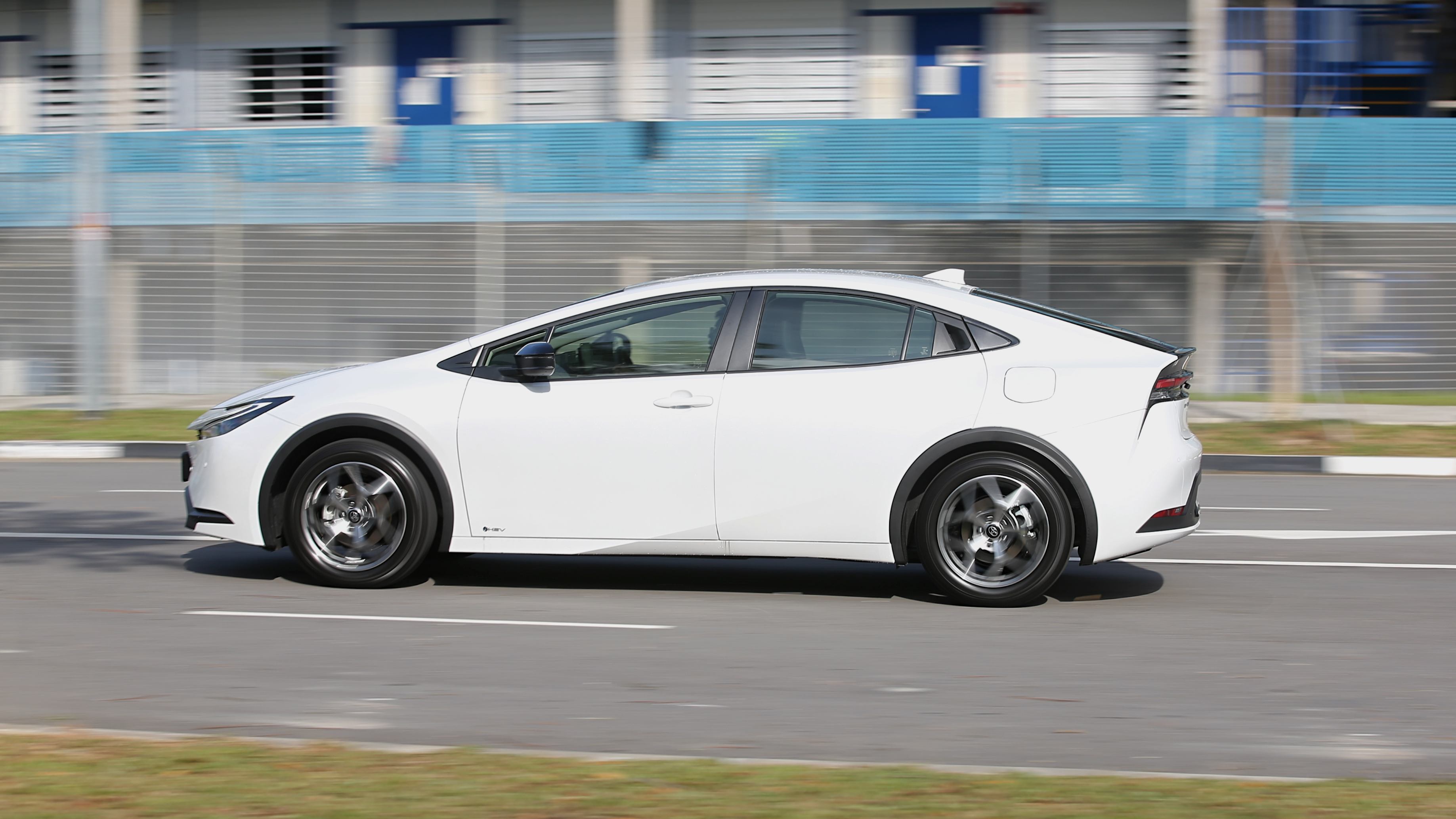
The Prius is a fantastic-looking fastback, but not fantastic in its handling and not fast (0-100km/h takes over 9 seconds).
There is nothing wrong with how the car turns into corners and runs through them. It is stable and always safe, with traction aids on standby to save my ass if I ever mistake the Prius for a Supra and stupidly try to fly like Supraman. But the cornering is merely functional and never fun.
Furthermore, the Prius’ 195/60 R17 Bridgestone Ecopia EP150 tyres are meant for economy driving rather than enjoyable driving.
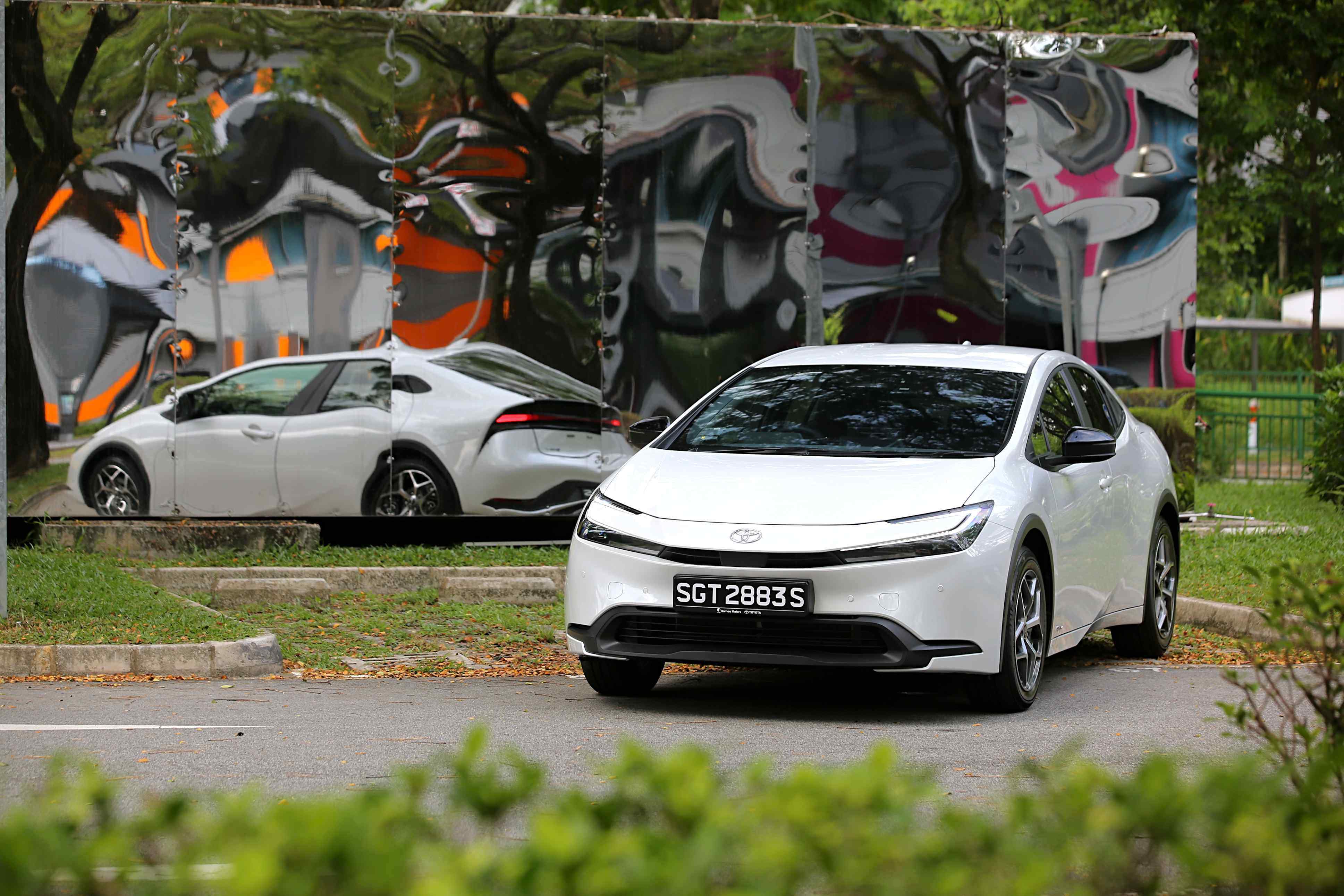
The suspension is generally comfortable and able to absorb the impact of humps, manhole covers and ridgelines. But a fair bit of road noise reaches the interior, especially over rough patches of tarmac, although this is more noticeable from the backseat.
Backseat passengers will also notice the generous legroom, decent headroom (just nice for 1.75m me), decently-supportive headrests, useful dual USB ports and practical left-seatback pocket. The more observant ones may find the floorboard’s middle hump a little obtrusive, the token doorbins too small, the lack of a centre fold-down armrest quite sad, and the unadorned door panels pretty spartan.
There are no rear air-con vents, but the Prius’ air-conditioning is powerful enough for everybody on board. The climate control pulls down the temperature like a controlled hurricane, even after the car is parked in the hot sun for a few hours.
Setting a temperature of 25 to 24 degrees C (in half-degree increments) is comfy in daytime, while 24 to 23 deg C is cold, 22 to 20 deg C is super cold, and anything lower (down to 18.0 and finally “LO”) turns the cabin into a Hokkaido winter in tropical Singapore.
Regardless of weather and location, the Prius is likely to prevail. It feels well-made (in Japan), but cost-saving is evident here and there. For instance, the boot’s underfloor uses flimsy white styrofoam organisers for the tyre inflator kit and tools, and the glovebox lid opens with a cheap clack.
Maybe Toyota should have saved the money from imprinting the silly “#GLOVEBOX” and “#SIDETRAY” hashtags at said areas and used it for some nicer materials instead. Full leather upholstery, perhaps, in place of part-leather/part-fabric with randomly-sporty red stitchings.
It would also have been nice to have classy touch activation for all the reading lights and not just those in the front - the individual reading lights in the back rely on old-school little buttons.
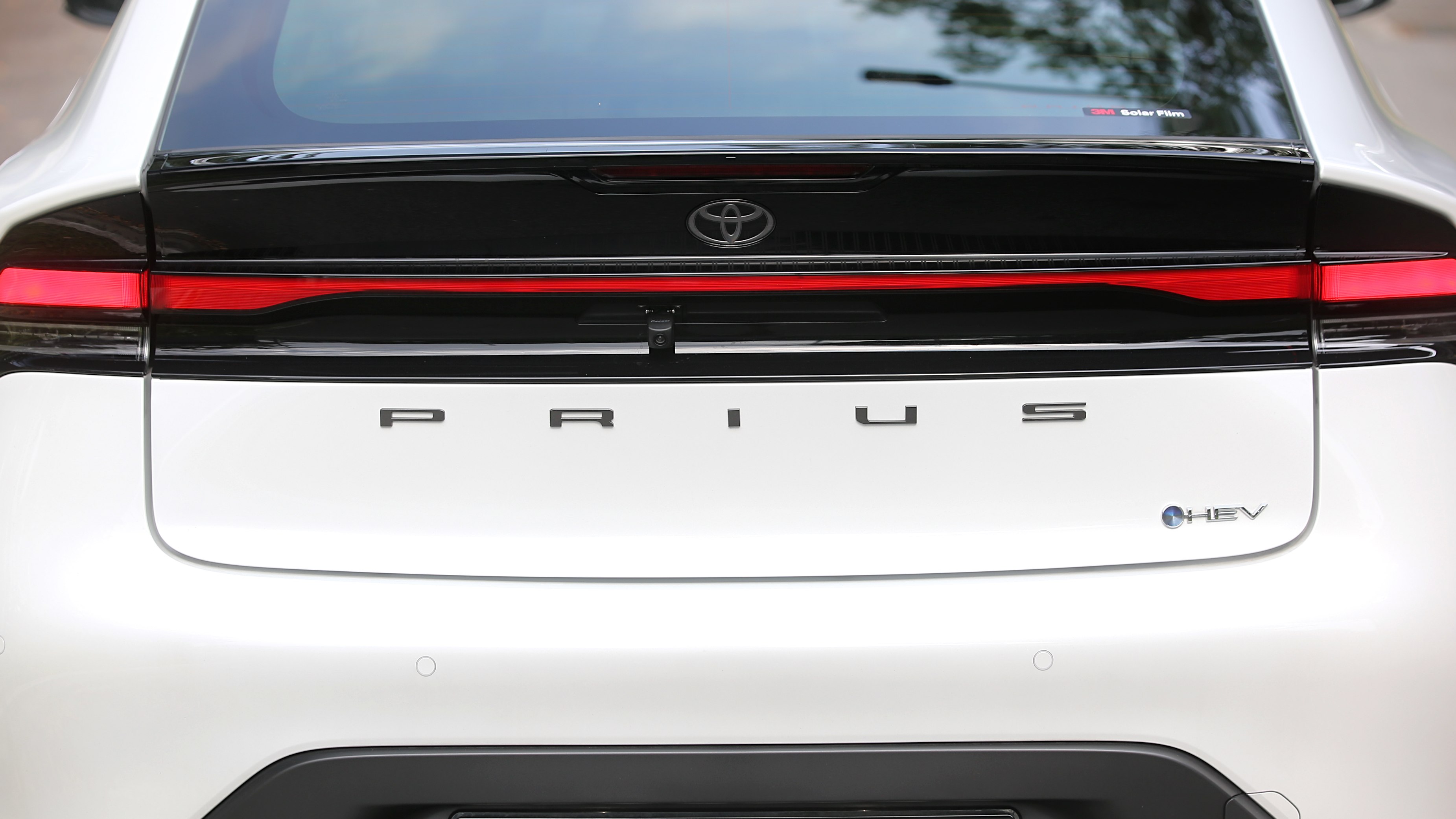
In conclusion, the fifth-generation Toyota Prius scores several firsts in my book.
It’s the first Prius to turn my head every time - not only whenever I spot one on the road, even if it’s a taxi, but also after I parked the test-car. It’s also the first Prius to make me feel pious and automatically drive gently as a mark of respect for the father of eco-friendly hybrids. Last but not least, it’s the first Prius I would seriously consider as my next personal vehicle, sometime at the outer edge of tomorrow.
| Toyota Prius Hybrid 1.8 | ||
|---|---|---|
| Price (at time of publishing): $193,888 including COE | VES Band: A2 | |
|
Engine:
4-cylinder 16-valve hybrid |
Capacity: 1,798 cc |
Power & Torque: 138bhp @ 5,200rpm & 142Nm @ 3,600rpm |
Transmission: CVT |
Driven Wheels: Front |
Consumption: 24.39 km/L |
0-100 km/h: 9.3 seconds |
Top Speed: 180 km/h |
Fuel Tank Capacity: 43 litres |
|
Dimensions (L x W x H):
4,599 mm x 1,782 mm
x 1,435 mm |
Wheelbase: 2,750 mm
|
Cargo Capacity: 370 litres |
Read More: mReview: Toyota Vellfire Hybrid - Emperor's Bento Boxcar
Super App for
Vehicle Owners
Download the Motorist App now. Designed by drivers for drivers, this all-in-one app lets you receive the latest traffic updates, gives you access to live traffic cameras, and helps you manage LTA and vehicle matters.
Did you know we have a Motorist Telegram Channel? Created exclusively for drivers and car owners in Singapore, you can get instant info about our latest promotions, articles, tips & hacks, or simply chat with the Motorist Team and fellow drivers.
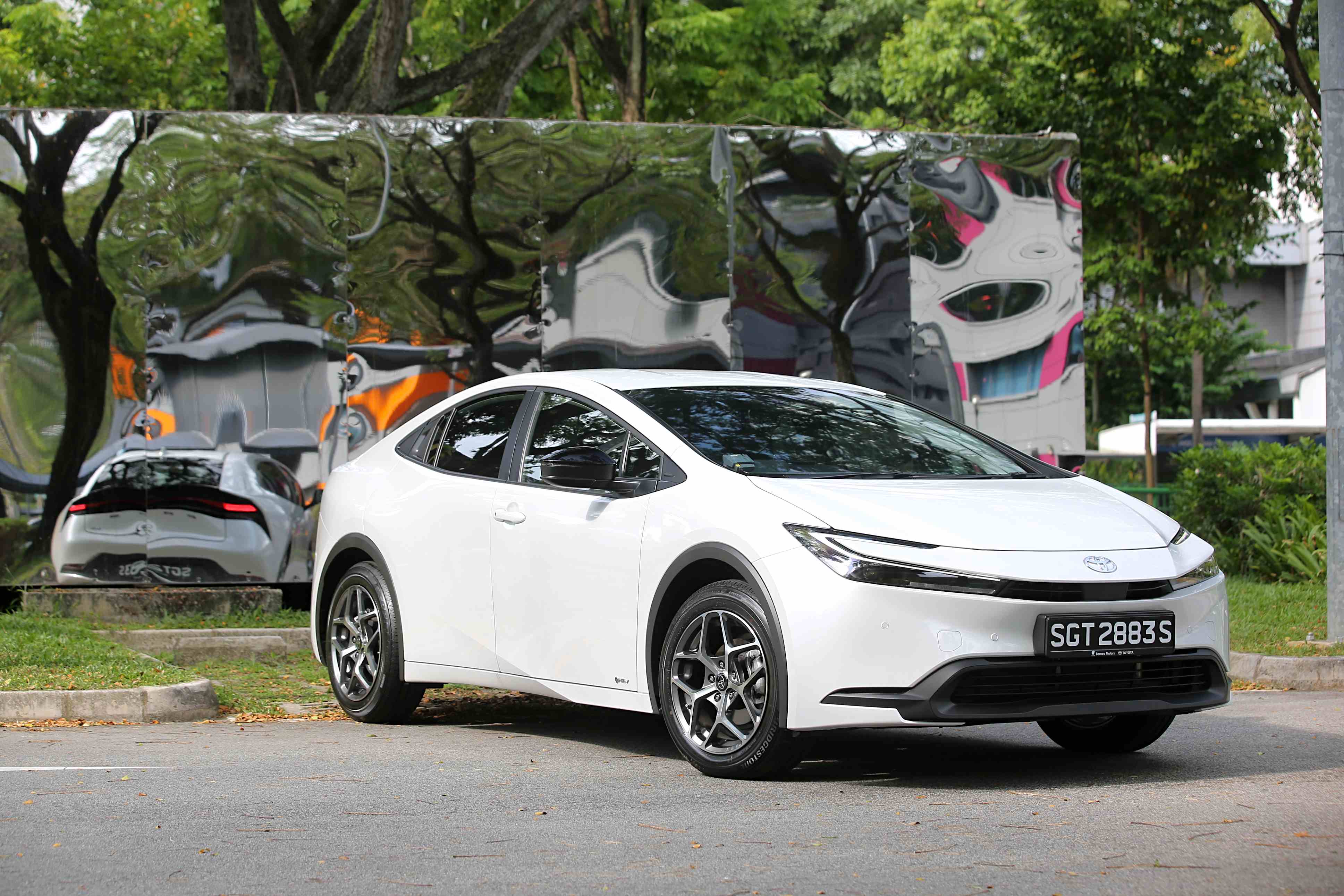

10 months ago